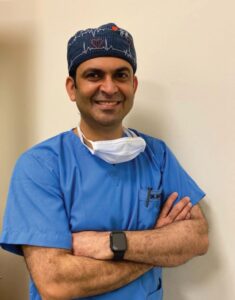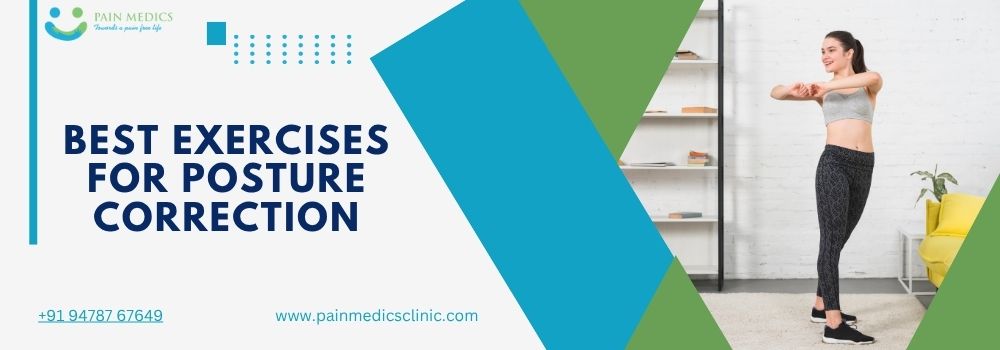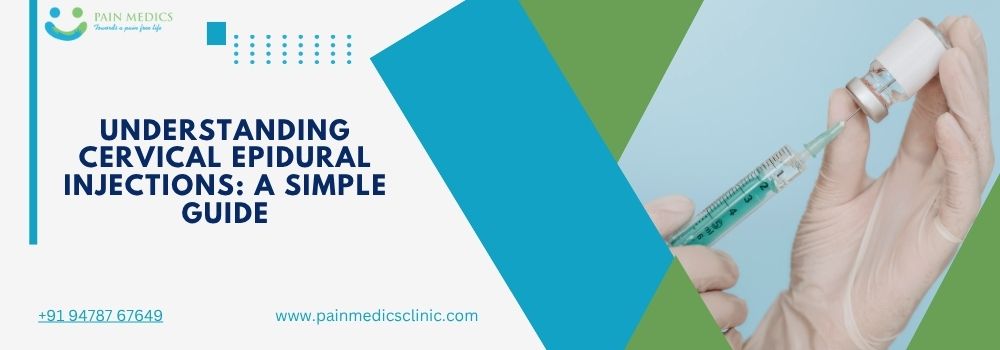Back pain with leg pain is a very common health problem encountered by many people around the world. One big reason for this pain is a condition called a herniated disc, also known as a slipped disc or Disc Prolapse. It happens when the soft part inside a spinal disc pushes out through a crack in the outer, tougher layer. This can press on nearby nerves and cause pain, pressure, or discomfort. Disc Prolapse is most commonly seen in individuals aged 35-45 years, although it can affect earlier or later than this. It affects the most productive years of one’s life.
The causes of a disc prolapse can be repetitive lifting, sudden twisting motions, poor posture, or even genetic factors. A slip disc can severely affect a person’s daily lifestyle, making simple tasks like walking, sitting, or even sleeping uncomfortable. People may experience symptoms like pain in the back, legs (sciatica), numbness, or weakness.
According to the National Institutes of Health (NIH), about 1 in every 20 adults over the age of 30 has experienced some form of disc prolapse. The condition may sound scary, but the good news is that surgery is not always needed. In fact, many people find significant relief through non-surgical slip disc treatment.
In this blog, we will explore non-surgical options for treating herniated discs, their types, benefits, and when you should see a doctor.
What is a Disc Prolapse or Slip Disc?
To understand the treatment, let’s first understand the condition.
The spine is made up of a series of bones called vertebrae, and between each of these bones are discs. These discs act as shock absorbers and help with movement and flexibility. Each disc has a soft, jelly-like centre (nucleus pulposus) and a tougher outer ring (annulus fibrosus).
A herniated disc occurs when the inner gel leaks out through a tear in the outer ring. This herniation can press on nearby nerves and cause pain or discomfort.
Symptoms of a Slip disc may include:
- Sharp pain in the back or neck
- Numbness or tingling in the arms or legs
- Muscle weakness
- Pain that worsens with movement
The location of the herniation (cervical, thoracic, or lumbar spine) often determines the type and intensity of symptoms.
Types Of Disc Prolapse
1. Cervical Disc Prolapse (Neck)
Examples – C4–5, C5–6, C6–7
Symptoms – neck pain, shoulder pain, arm tingling/numbness, weakness in arms or hands.
2. Thoracic Disc Prolapse (Mid-back)
Examples – T6–7, T7–8, T8–9
Symptoms – upper or mid-back pain, chest or rib pain, and sometimes abdominal weakness.
Thoracic Disc Prolapse is a less common disc prolapse condition because the thoracic spine is more stable.
3. Lumbar Disc Prolapse (Lower Back)
Examples: L3-4, L4–5, L5–S1
Lumbar Disc Prolapse is the most common type due to weight-bearing stress.
4. Multiple-Level Disc Prolapse
Examples: L4–5 and L5–S1 together
Prolapse at more than one spinal level. It can cause combined nerve symptoms.
Slip Disc Treatment Options: Surgical vs. Non-Surgical
Treatments for slip disc fall into two main categories: non-surgical and surgical.
Non-Surgical Slip Disc Treatment
Fortunately, most people recover without surgery. Non-surgical options aim to relieve pain, reduce inflammation, improve mobility, and strengthen the back muscles. Let’s talk about the non-surgical treatments for herniated discs
Types of Non-Surgical Treatments for Slip Disc
Non-surgical treatments are usually the first line of defence. They are safe, effective, and less invasive. Here are the most common types:
- Physical Therapy
It is one of the most recommended treatments for Disc Prolapse. Physical therapy helps strengthen the muscles around the spine, improve flexibility, and reduce pressure on the disc. It works best in early disc prolapse.
- Medications
- Pain relievers (like ibuprofen)
- Muscle relaxants
- Nerve pain medications (like gabapentin)
These help manage symptoms of disc prolapse, especially during the initial flare-up.
- Epidural Injections
Epidural Injections are a mixture of local anaesthetics and corticosteroids, injected near the affected nerve to reduce inflammation and provide temporary relief from the pain of disc prolapse. This is especially helpful for leg pain or sciatica.
- Intradiscal treatment
Intradiscal treatment, such as intradiscal ozone therapy, local anaesthetics, or platelet-rich plasma injected into the disc. It serves as an excellent treatment for a slipped disc. It acts by reducing the disc size from inside and repairing the herniated disc, thereby decreasing inflammation in the surrounding nerves.
- Radio Frequency Ablation (RFA)
In long-standing disc-related issues, small nerves around the joints of adjacent vertebrae get inflamed and cause back pain in addition to disc-mediated pain. Radiofrequency ablation of these nerves helps to reduce inflammation around the joints and the major spinal nerves exiting close to them, and reduce sciatica-like symptoms, in addition to relief from back pain.
- Nerve Blocks
Nerve block treatment includes the blockage of nerve signals from travelling, thus stopping the pain signals to the brain. This effectively helps in treating the Slipped Disc pain.
Other Treatment Options
There are many simple, non-surgical ways to help with a herniated disc. One option is acupuncture, where thin needles are gently placed on certain parts of the body to reduce pain and help the body heal. Making lifestyle changes can also make a big difference, like sitting and standing with good posture, not lifting heavy things, quitting smoking, and staying at a healthy weight.
Traction therapy is another method that gently stretches the spine to ease pressure on the disc and nearby nerves. You can also use heat and cold therapy. Some people also get relief from chiropractic care, where trained experts adjust the spine, but this should always be done by a professional.
Both these modalities need to be taken under expert and skilled guidance to avoid any problems getting aggravated.
Surgical Treatment
Surgery may be recommended when non-surgical methods fail to provide relief after several weeks or if the herniation causes loss of bladder control, severe weakness, or persistent pain.
Common surgical options include:
Discectomy: Removing part of the herniated disc.
Laminectomy: Removing part of a vertebra to relieve pressure.
Spinal Fusion: Fusing two or more vertebrae to stabilise the spine.
While effective, surgeries come with risks like infections, nerve damage, or long recovery times.
Benefits of Non-Surgical Slip Disc Treatment
Choosing non-surgical treatment offers many advantages:
No Recovery Downtime – Unlike surgery, which requires weeks or even months of healing, non-surgical treatments allow patients to continue daily activities with minimal disruption.
Less Collateral Tissue Damage – Because non-surgical interventions are mostly carried out with needles, minimal or no collateral damage to surrounding muscles is seen.
Lower Risk – There is no risk of surgical complications like infection, anaesthesia issues, or nerve injury.
Cost-Effective – Non-surgical slip disc treatments are often less expensive compared to hospital stays and surgeries.
Customizable Approach – Treatment plans can be tailored to the individual’s symptoms, lifestyle, and needs.
Focus on Root Cause – Rehabilitation therapies not only manage symptoms but also aim to strengthen the spine, prevent recurrence, and improve long-term spine health.
Best Slip Disc Treatment
When it comes to Slip Disc Treatment without surgery, Pain Medics Clinic stands out as a top choice. Here is why:
Spine Specialist – Our team includes World Institute of Pain-certified Spine Specialists, physical therapists, and spine care professionals who focus on non-invasive solutions.
Advanced Technology – We use the latest diagnostic tools and equipment to design customised treatment plans for each patient.
Patient-Centred Care – Every individual’s pain is unique. We prioritise your comfort, lifestyle, and goals in every step of the recovery process.
Proven Results – Our patients have found long-term relief from herniated disc pain through non-surgical programs.
Pain Medics Clinic is the only clinic in the region run by a World Institute of Pain Certified Doctor. Whether you need physical therapy, non-surgical interventions, or lifestyle guidance, the Spine Specialist at Pain Medics Clinic provides comprehensive care under one roof. We focus on healing, not just treating symptoms.
Conclusion
A herniated disc may be painful, but it does not always need surgery. Non-surgical treatments offer effective, safe, and affordable options to relieve pain and restore your daily life. With early intervention and the right care team, you can recover without going under the knife.
If you or someone you love is suffering from a herniated disc, Pain Medics Clinic and our Spine Specialist are here to help you get back to life, pain-free, without the need for undergoing surgery.







